It’s a thrill to get tattooed these days. As the needle makes its imprint, you clench your fist and bite your tongue. “This will be my favorite tattoo for the rest of my life”, you tell yourself as you examine your cool new ink.
Fast-forward ten years: that Chinese character you had permanently etched on your wrist does not, in fact, doesn’t translate as “strength”. Maybe you adore your first design, but it’s time for an upgrade. Laser tattoo removal is the most effective method of removing or changing body tattoos if done correctly and appropriately.
If you have ever had a tattoo removed, you may be wondering if it is possible to get another one. The answer is yes – you can tattoo over a removed tattoo. However, there are some things that you need to keep in mind before making this decision. In this blog post, we will discuss the pros and cons of getting a new tattoo over an old one. We will also give you some tips on how to make the process as smooth as possible.
Is It Better To Get A Tattoo Removed Or Covered Up?
If you’re not happy with your tattoo, you may be considering getting it removed. But did you know that you can actually get a new tattoo over your old one? In some cases, it may be better to cover up your old tattoo instead of getting it removed.
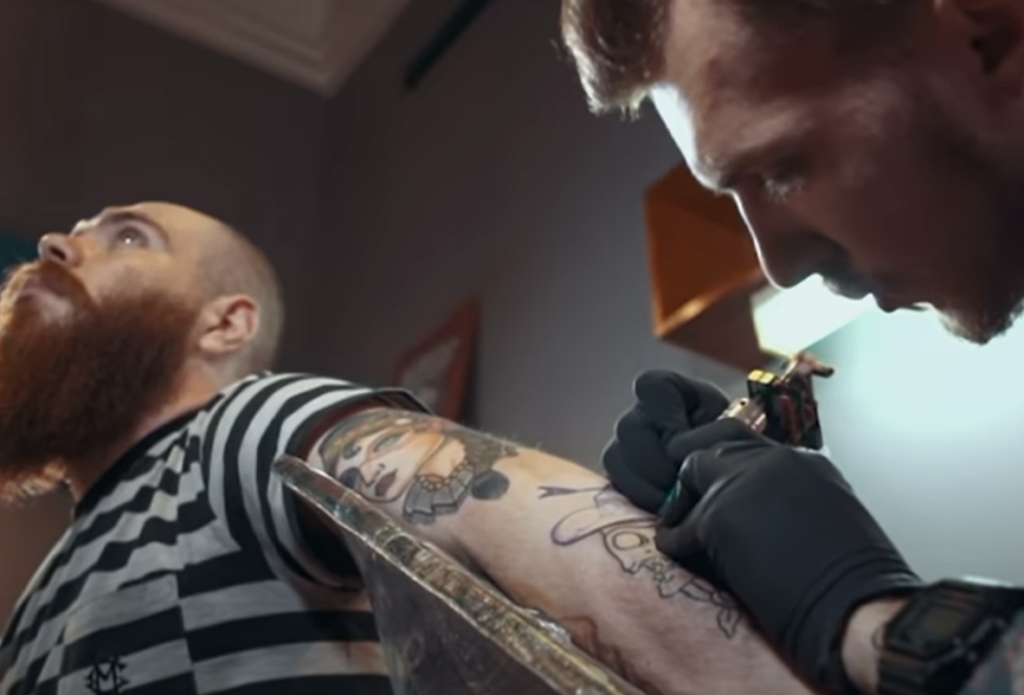
Here are a few things to consider when making your decision:
- The size of the tattoo. If your tattoo is small, it will be easier to cover up than if it’s large;
- The location of the tattoo. A tattoo on your arm or leg will be easier to cover up than one on your face or chest;
- The color of the tattoo. A dark-colored tattoo will be easier to cover up than a light-colored one;
- The age of the tattoo. A newer tattoo will be easier to cover up than an older one;
If you’re considering getting your tattoo removed, talk to a dermatologist or cosmetic surgeon about your options. They can help you decide if removal or coverage is the best option for you.
What Is Laser Tattoo Removal?
Fading a tattoo is an excellent choice for people who want to get new tattoos. By working with a tattoo artist to fade the old tattoo, it becomes easier to cover up with a new design. This method provides the artist with more space and opportunity to create an ideal cover-up.
Benefits Of Tattoo Removal Or Fading Before Getting A Cover-Up:
- Cover-ups can be done on any skin tone, but the darker your skin, the more difficult it will be to achieve satisfactory results [2];
- Tattoo removal is less expensive than a cover-up;
- Tattoo removal leaves the skin in better condition for a cover-up. In some cases, it may even be necessary to remove the tattoo before getting a cover-up;
- Tattoo fading can lighten the tattoo enough to make a successful cover-up possible;
Can You Tattoo Over Laser Tattoo Removal?
The short answer is yes, you can tattoo over a removed tattoo. However, there are a few things to consider before doing so [3]:
- If you have a removed tattoo, the skin will likely be sensitive. You may also have scarring from the removal process. These can both impact how the new tattoo looks and heals;
- It’s important to wait until the skin has healed completely before getting a new tattoo. This can take several months;
- You’ll need to find a reputable artist who is experienced in working with removed tattoos. They should be able to cover up the old tattoo without causing any further damage to the skin;
If you’re considering getting a new tattoo over a removed tattoo, be sure to do your research and talk to a professional before making any decisions.
Can You Get A Tattoo After Laser Removal?
Laser tattoo removal can be a lengthy and costly process. If you’re considering laser tattoo removal, it’s important to understand the risks and side effects associated with the procedure. These can include pain, swelling, blistering, scarring, and changes in skin pigmentation.
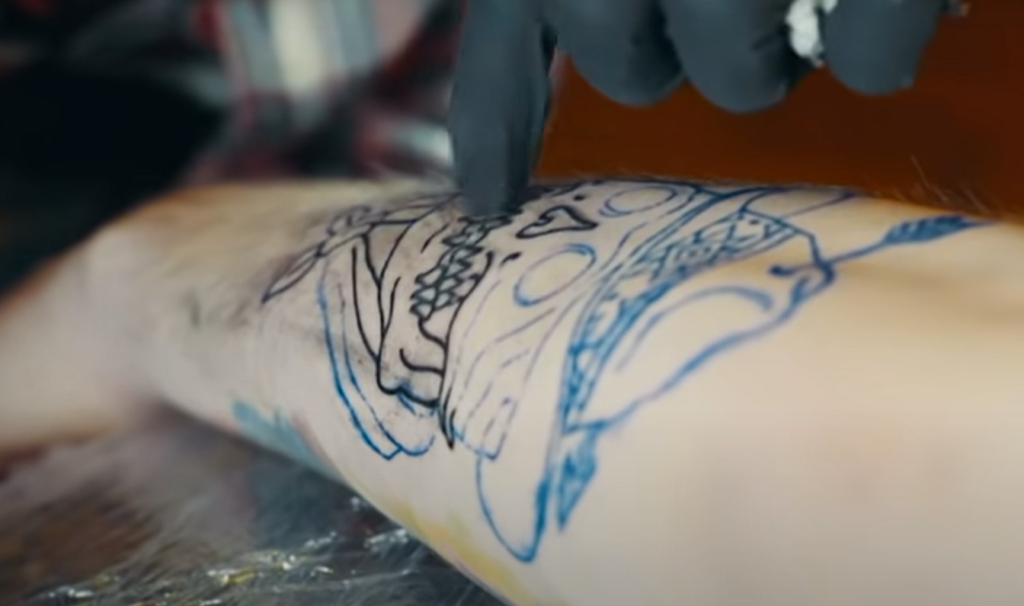
If you’re considering getting a cover-up tattoo, there are a few things you should keep in mind:
- First, it’s important to find an experienced and reputable tattoo artist who specializes in cover-ups. They’ll be able to work with you to determine the best way to cover up your old tattoo;
- Second, make sure you have a clear idea of what you want your new tattoo to look like before getting started;
- And finally, be prepared to spend a little extra time and money on your new tattoo, as cover-ups typically require more work than regular tattoos;
How Soon Can A New Tattoo Be Lasered?
Once you have completed the tattoo removal process, it is advisable to wait at least 6 weeks before getting a new tattoo in the same area. Many artists will suggest that you wait 6 months so that your body has time between removal sessions to ensure that your immune system has slowed down and that the new tattoo will not be removed along with the old ink.
How Long After Tattoo Removal Can You Get A Cover-Up?
The answer to this question depends on a few factors, such as the size and location of your removed tattoo, as well as the type of cover-up you’re looking to get.
Once your skin is healed, you can consult with a tattoo artist about the best way to cover up your removed tattoo. They will likely recommend waiting another six to eight weeks before starting the cover-up process so that your skin has plenty of time to heal and regenerate.
What’s The Skin Like After Laser Tattoo Removal?
The skin is typically red and swollen immediately after laser tattoo removal. The area may also be itchy. Over the next few days, the skin will blister and scab. The scabs will eventually fall off, revealing new skin underneath.
It can take several weeks for the skin to heal completely after laser tattoo removal. During this time, it’s important to keep the area clean and dry. You should also avoid picking at or scratching the scabs, as this could lead to infection or scarring.
Once the skin has healed, you may be able to get a new tattoo in the same spot. However, it’s important to wait until your skin is fully healed before getting a new tattoo. Otherwise, you risk infection or scarring.

Proper Aftercare After Laser Tattoo Removal
If you have any questions about your laser tattoo removal treatments or aftercare, be sure to ask your provider. And remember, be patient – it can take several sessions to completely remove a tattoo!
FAQ:
- What is the hardest color tattoo to remove?
Green ink is the most challenging to remove, with light blue being a close second. Neon colors are also very troublesome and often require numerous sessions with the laser. If there is greater contrast between the tattoo’s color and your skin tone, then usually there will be better results [6].
- Does removing a tattoo leave a scar?
Most people who have their tattoos removed will end up with some scarring. The amount of scarring depends on the size and location of the tattoo, as well as the method used to remove it. Laser removal tends to be less invasive than other methods, such as surgery, and therefore usually results in less scarring.
If you’re considering getting a new tattoo, you may be wondering if it’s possible to tattoo over a removed tattoo.
The answer is yes, but there are a few things you need to keep in mind first:
- For one, your skin needs to be fully healed before being re-tattooed. This means that all scabs and scars from the removal process need to be completely gone;
- If you try to tattoo over scar tissue, the ink will not take properly and you’ll end up with a patchy-looking tattoo;
- Additionally, it’s important to find a reputable artist who is experienced in covering up removed tattoos. They’ll be able to help you choose the right design and placement for your new tattoo so that it effectively covers up the old one;
- How many sessions does it take to remove a tattoo?
The process of tattoo removal via laser differs from person to person because each individual and their tattoo is unique. Although it’s difficult to determine how many treatments will be required for complete elimination, most people require 6-8 sessions. Tats that are considerably bigger may need 10 or more treatments [7].
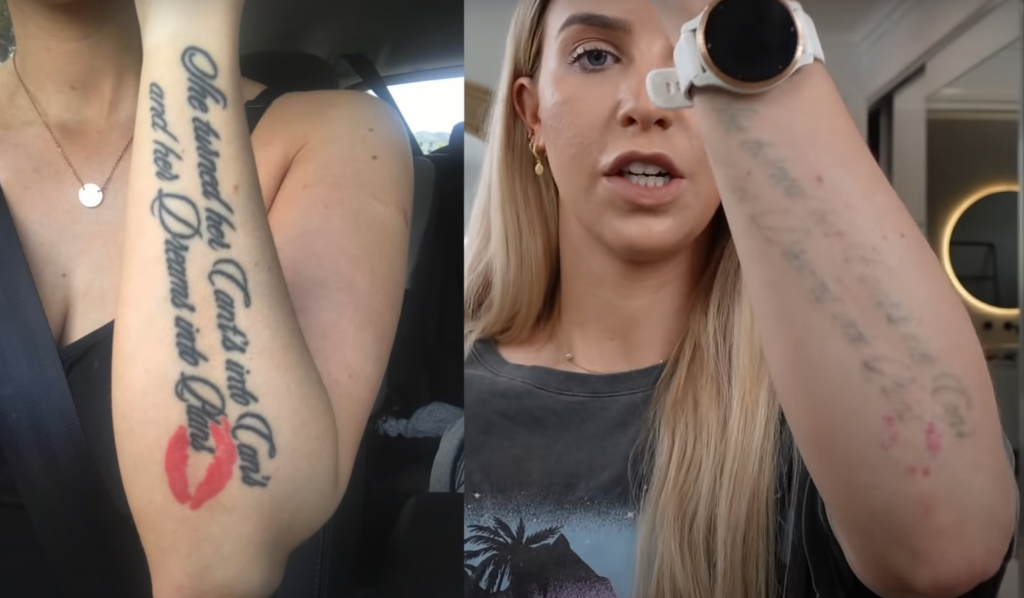
- How long after a tattoo laser does the tattoo fade?
Laser tattoo removal can take anywhere from a few sessions to several months, depending on the location, size, and depth of the tattoo. Most people need between 4-8 treatments to see significant fading. However, some may see results after just a couple of sessions. After each treatment, the tattoo will gradually fade over the next few weeks.
- What is the most effective tattoo removal?
There are a few different tattoo removal methods that can be effective, depending on the size, color, and location of your tattoo.
The most common method is laser tattoo removal, which uses pulses of light to break up the ink on your skin.
Other options include dermabrasion (a technique that uses a rotating brush to sand away the top layers of skin), surgical removal, and “natural” methods like using salt or lemon juice to fade the tattoo over time.
If you’re considering removing a tattoo, it’s important to talk to a dermatologist or other skin specialist first to find out which method is right for you.
- How often can you get tattoo laser removal?
The time it takes for your skin to heal is five to eight weeks. It may be longer if your skin needs a long amount of time to heal. You can have your tattoo removed in as little as two weeks, but it may take longer [8].
You will need to have multiple sessions to remove your tattoo. It could take anywhere from 4-12 sessions to remove your tattoo completely.
The cost of laser removal can also vary depending on these factors. On average, each session costs between 0 and 0. So, the total cost of removal could be anywhere from 0 to 00.
- Can black tattoos be fully removed?
Yes, black tattoos can be fully removed. However, it may take multiple laser treatments and a longer period of time to completely remove the tattoo. The number of treatments needed will depend on the size, location, and age of the tattoo. If you are considering removing a black tattoo, be sure to consult with a board-certified dermatologist or plastic surgeon who is experienced in tattoo removal.
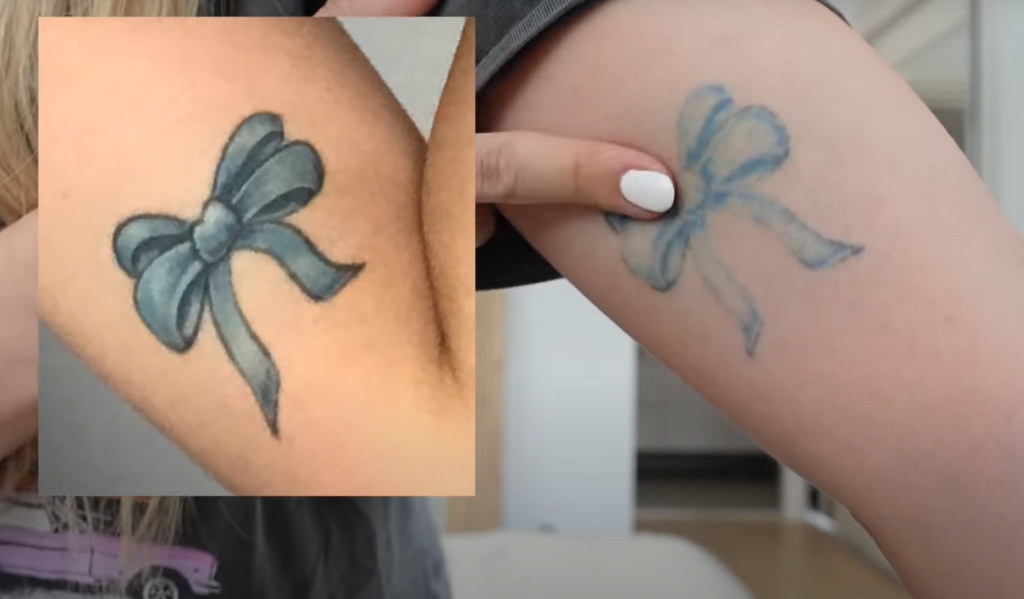
- Do white tattoos turn yellow when tanning?
No, white tattoos do not turn yellow when tanning. White ink is one of the lightest colors used in tattoos and it usually doesn’t absorb many colors from the sun. However, if you are concerned about your tattoo fading, you can always use sunscreen to help protect it.
- How can I remove a tattoo at home fast?
There are a few at-home tattoo removal methods that claim to be fast and effective, but these methods are not recommended. At-home tattoo removal methods can be painful and can cause permanent damage to your skin. If you’re considering removing a tattoo, it’s best to consult with a board-certified dermatologist or plastic surgeon who is experienced in tattoo removal.
Tattoo removal is a complex and difficult process, so it’s important to consult with a professional before making any decisions. Board-certified dermatologists and plastic surgeons who are experienced in tattoo removal can help you determine the best course of action for your individual situation.
- Why is my tattoo darker after laser removal?
Laser tattoo removal works by targeting the ink pigment with pulses of light energy. This shatters the tattoo ink into tiny particles that are then absorbed and eliminated by the body. However, sometimes the laser can also damage the surrounding skin tissue, which can cause the tattoo to appear darker after removal. In some cases, this darkening may be permanent. If you’re concerned about this possibility, be sure to discuss it with your tattoo removal specialist beforehand.
- What is the “tattoo vanish” method?
The “tattoo vanish” method removes the ink instead of absorbing it into your body. With laser tattoo removal, the ink that is broken down by the laser is not removed from the surface of the skin but rather absorbed into the body. Your lymphatic system will remove the ink from your body, and you will excrete it when you urinate [9].
- What are the side effects of laser tattoo removal?
Laser tattoo removal is a popular choice for people who want to get rid of their tattoos. However, there are some side effects that you should be aware of before you undergo this treatment.
The most common side effect of laser tattoo removal is skin irritation. This can include redness, swelling, and blistering of the treated area. These side effects usually go away within a few days.
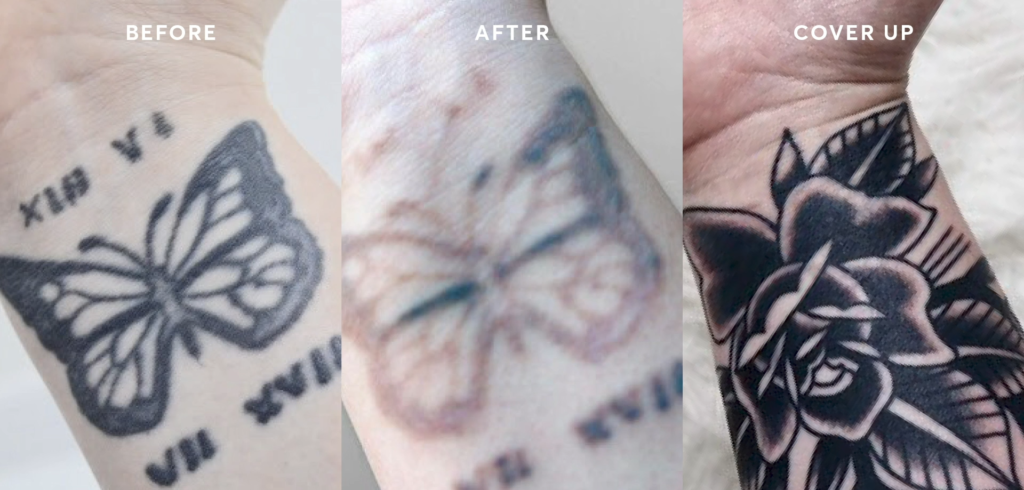
In rare cases, more serious side effects can occur, such as infection or scarring. If you experience any of these side effects, you should contact your doctor immediately.
- Are old tattoos harder to remove?
The age of your tattoo will determine how simple it is to remove. Because they have already faded over time, older tattoos are simpler to remove. As a result, removing an older tattoo might require fewer sessions than a newer one would [10].
- Can tattoo removal cause kidney problems?
Yes, tattoo removal can cause kidney problems. The main risk factor for this is the use of heavy metals in the tattoo ink. These heavy metals can be toxic to the kidneys and can cause kidney damage.
Another risk factor for kidney problems from tattoo removal is the use of lasers. Lasers are used to break up the ink pigments so that they can be removed from the skin. However, these lasers can also damage the skin and underlying tissues. This damage can lead to infection and inflammation, which can then cause kidney problems.
- How much does it cost to remove a tattoo sleeve?
A sleeve tattoo generally falls into the category of an extra-large tattoo. This is because it typically occupies more than 25 square inches of space. Many removal companies calculate their fees by the square inch, with prices averaging – per session [11].
- Can salt and ice remove a tattoo?
If you’re considering removing a tattoo, you may have heard that a home remedy of salt and ice can do the trick. Unfortunately, this method is ineffective and can actually cause more harm than good.
Salt and ice can remove the top layer of skin, which may make it appear as though the tattoo is fading. However, this damage is only temporary and will eventually heal. The tattoo will still be visible once the skin heals. In addition, salt and ice can cause burns, blisters, and scarring.
- Do lemon and salt remove tattoos?
Lemon and salt are sometimes used as a home remedy for removing tattoos, but this method is also ineffective. Lemon juice can cause skin irritation and may lighten the tattoo temporarily. Salt can also damage the skin, leading to burns, blisters, and scarring.
Useful Video: It’s No Big Deal “Laser Tattoo Removal”
References:
- https://removery.com/blog/can-you-tattoo-over-a-removed-tattoo/
- https://www.advancedlaser.ca/blog/can-you-get-a-cover-up-tattoo-after-laser-tattoo-removal/
- https://removery.com/blog/can-you-tattoo-over-a-removed-tattoo/
- https://lynchvein.com/blog/can-you-get-a-new-tattoo-over-a-laser-removed-tattoo
- https://lynchvein.com/blog/can-you-get-a-new-tattoo-over-a-laser-removed-tattoo
- https://www.laseraway.com/articles/tattoo-removal/what-are-the-hardest-tattoos-to-remove/
- https://361derm.com/aesthetic-medicine/how-many-tattoo-removal-sessions-do-i-need-to-get-rid-of-my-tattoo
- https://www.premiumtattooremoval.com/laser-tattoo-removal/often-can-get-laser-tattoo-removal
- https://www.healthline.com/health/body-modification/tattoo-removal-pain
- https://stillwatersmedspa.com/are-old-tattoos-easier-to-remove
- https://removery.com/tattoo-removal/sleeve





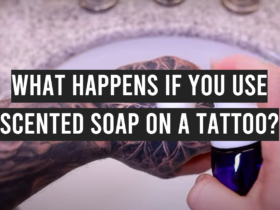
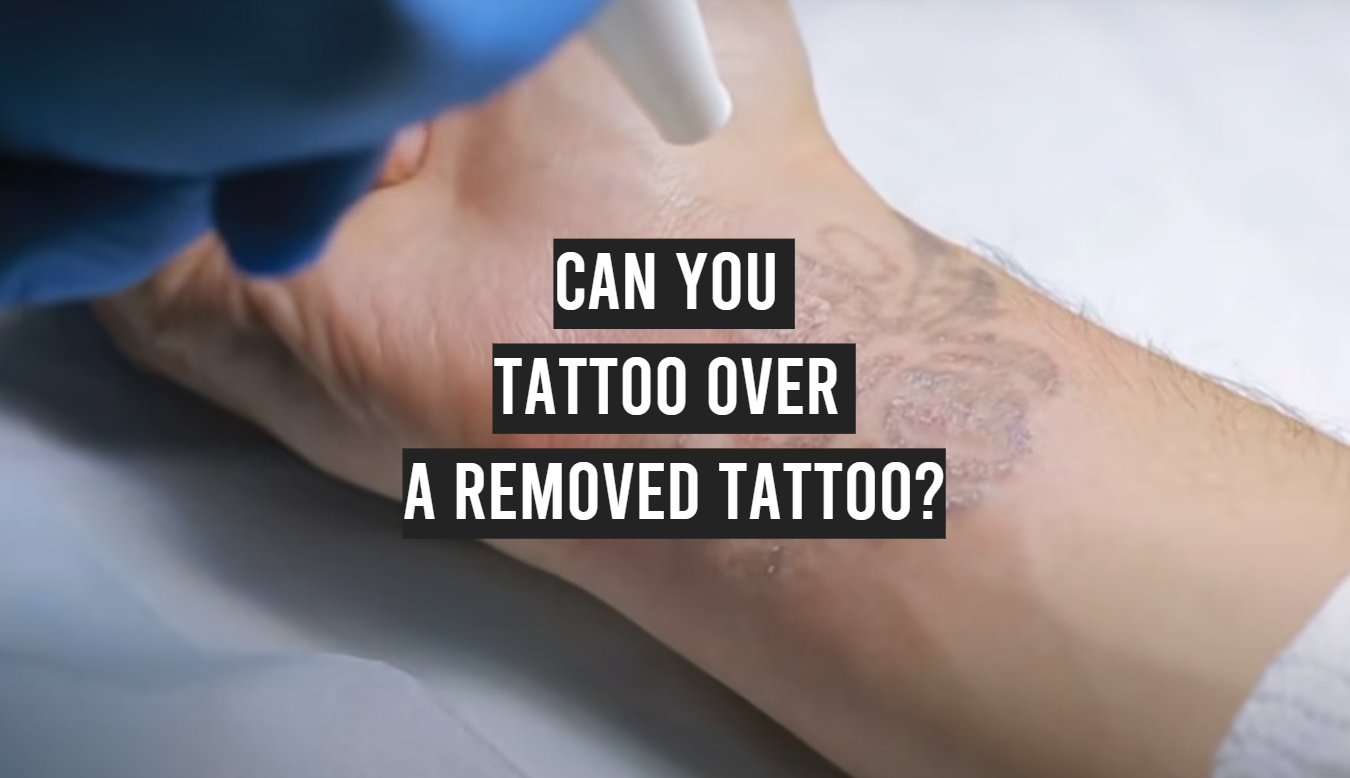

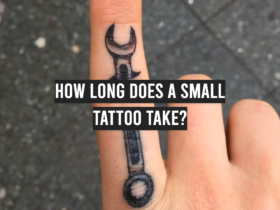


Leave a Review